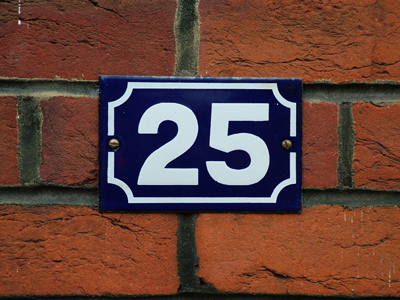
Ask the AI Tutor
Need help with Level 3-4 Algebra - Square Numbers? Ask our AI Tutor!
AI Tutor - Lucy
Connecting with Tutor...
Please wait while we establish connection

The square number immediately after 16 is 25.
Level 3-4 Algebra - Square Numbers
Square numbers are results of multiplying a number by itself. Learn to recognise squares, use area models, and apply the difference of two squares in KS3 algebra.
1 .
A patch of garden is 10 metres x 10 metres. What is its area expressed in square metres?
210
102
2 x 10
10 x 2
2 .
How would you refer to 32?
Large 3, little 2
3, superscript 2
3 multiplied by 2
3 squared
You might say '3 to the power of 2' but it is more usual to say '3 squared'
3 .
What is the missing square number in the sequence 1, 4, 9, 16, 25, 36, 49, ......., 81?
56
60
64
68
64 is 8 x 8; on one side it has 7 x 7 (49) and on the other side it has 9 x 9 (81)
4 .
The roof of a rabbit hutch is completely tiled. There are 7 tiles across and 7 tiles down. How many tiles are there altogether?
14
28
42
49
Can you see why the number of tiles might be referred to as 72?
5 .
What is the next square number after 9?
12
14
16
18
3 x 3 is 9; 4 x 4 is 16
6 .
What is 12?
0
1
2
3
1 x 1 = 1
7 .
Is the number 13,692 a square number?
Yes
No
Only in algebra
Always, except in algebra
A square number (also called a perfect square) is a positive whole number that is formed by multiplying a whole number with itself. For example, 16 = 4 x 4; 1 = 1 x 1; 1,681 = 41 x 41, and so on
8 .
What is 02?
0
2
4
8
No matter how many times you multiply 0 x 0 it will still be 0!
9 .
What is the square number that comes immediately before 36?
10
15
20
25
6 x 6 is 36; 5 x 5 is 25
10 .
What number is 32?
3
6
9
12
Multiply 3 by itself (3) and you get 9
**Unlimited Quizzes Await You! 🚀**
Hey there, quiz champ! 🌟 You've already tackled today's free questions.
Ready for more?
Ready for more?
🔓 Unlock UNLIMITED Quizzes and challenge yourself every day. But that's
not all...
not all...
🔥 As a Subscriber you can join our thrilling "Daily Streak" against other
quizzers. Try to win a coveted spot on our Hall of Fame Page.
quizzers. Try to win a coveted spot on our Hall of Fame Page.
Don't miss out! Join us now and keep the fun rolling. 🎉
**Unlimited Quizzes Await You! 🚀**
Hey there, quiz champ! 🌟 You've already tackled today's free questions. Ready for more?
🔓 Unlock UNLIMITED Quizzes and challenge yourself every day. But that's not all...
🔥 As a Subscriber you can join our thrilling "Daily Streak" against other quizzers. Try to win a coveted spot on our Hall of Fame Page.
Don't miss out! Join us now and keep the fun rolling. 🎉






